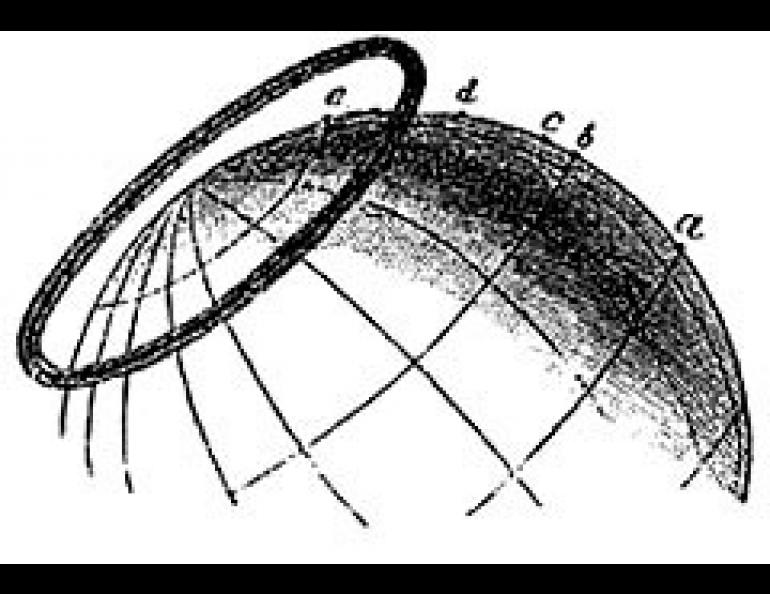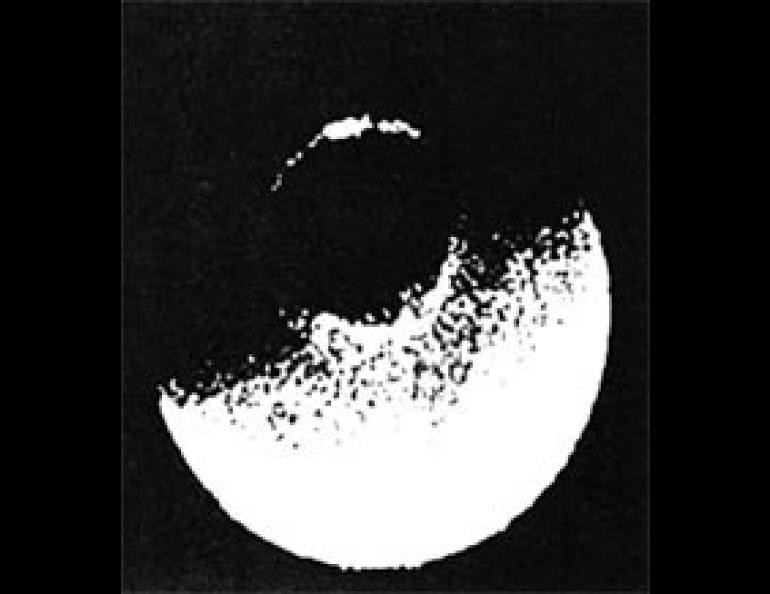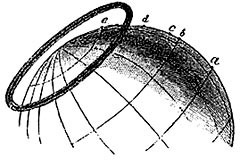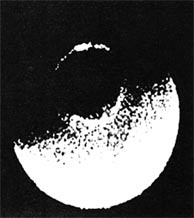

The Aurora Seen From Outer Space
An aurora is the visible manifestation of an immense electrical current system that is continuously pumping millions of megawatts of electromagnetic and thermal power into the upper polar atmospheres. At times, the current produced exceeds the entire electrical generating capacity of the United States.
Such an astonishing electrical phenomenon and the awesome displays that it creates are a product of the interaction of the solar wind (a hot gas streaming from the sun) and the earth's magnetic field. At the height of an auroral display, the upper atmosphere functions as a gigantic television screen as the air molecules give off light when they are struck by electrons and protons that have been ejected from the surface of the sun a few days earlier. These particles are funneled down along the earth's magnetic field lines into an "auroral oval" surrounding the magnetic poles. The diameter of the oval becomes greater (and the aurora moves further south--or north, in the southern hemisphere) when the number of injected particles increases, such as during a period of intense sunspot activity.
As long ago as 1860, scientists suspected that the aurora occurred as a ring surrounding the north pole, although they incorrectly thought that it appeared along the edge of pack ice in the Arctic Ocean (it was not then known that nearly identical auroras occur simultaneously around the south magnetic pole).
Professor Syun-Ichi Akasofu and his team of auroral scientists at the Geophysical Institute have done much to solve the mysteries of the aurora over the past twenty years, but one tantalizing observation lay beyond reach--it had never been possible to observe the entire auroral oval at one time. The view was just too big.
During the International Geophysical Year (IGY) in 1957-58, auroral scientists around the world put forth an effort that enabled simultaneous photographs of the aurora to be made from more than 100 different localities. Even so, this was less than ideal for getting an overall view of the auroral display, because the field of view from a single location is only about 1/20 or 1/30 of the entire polar sky.
Even after the beginning of the Space Age, satellites orbiting at altitudes of a few hundred miles still could not take in the full scene. In the fall of 1981, however, auroral photographs were taken, for the first time, from an altitude of about 12,500 miles above the north polar region by NASA's Dynamic Explorer Satellite. The imaging device used aboard the satellite was constructed by Dr. Louis Frank and his team at the University of Iowa.
It can be clearly seen in the photograph that the planet earth wears the aurora like a crown. In Alaska, when you see a ribbon of aurora stretching from the eastern to the western horizon, you are looking at only a small portion of the auroral curtain that surrounds the magnetic pole.
So at last, there exists graphic confirmation of what auroral scientists have known for years. Prof. Akasofu's group and others around the world can rightfully chorus a lusty "We told you so!"






